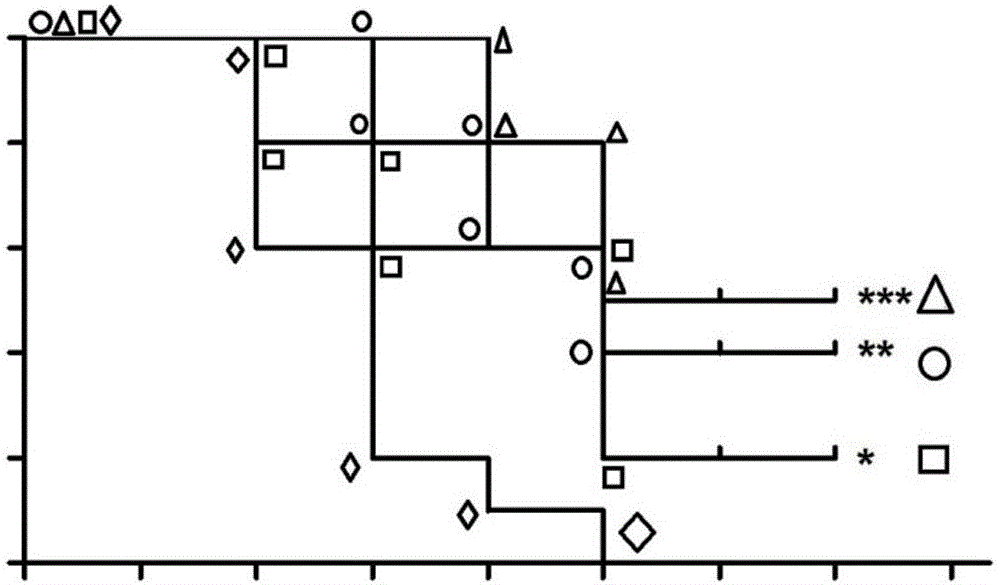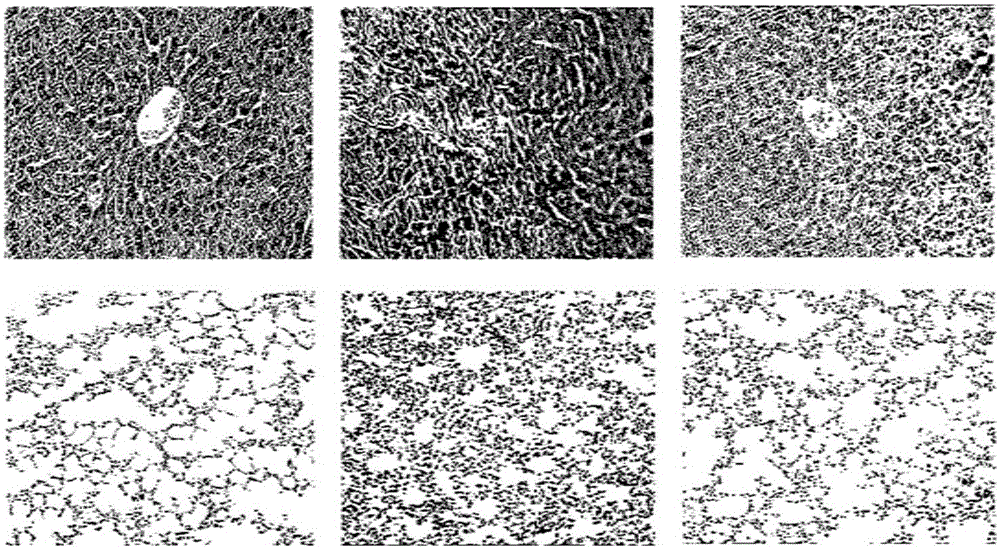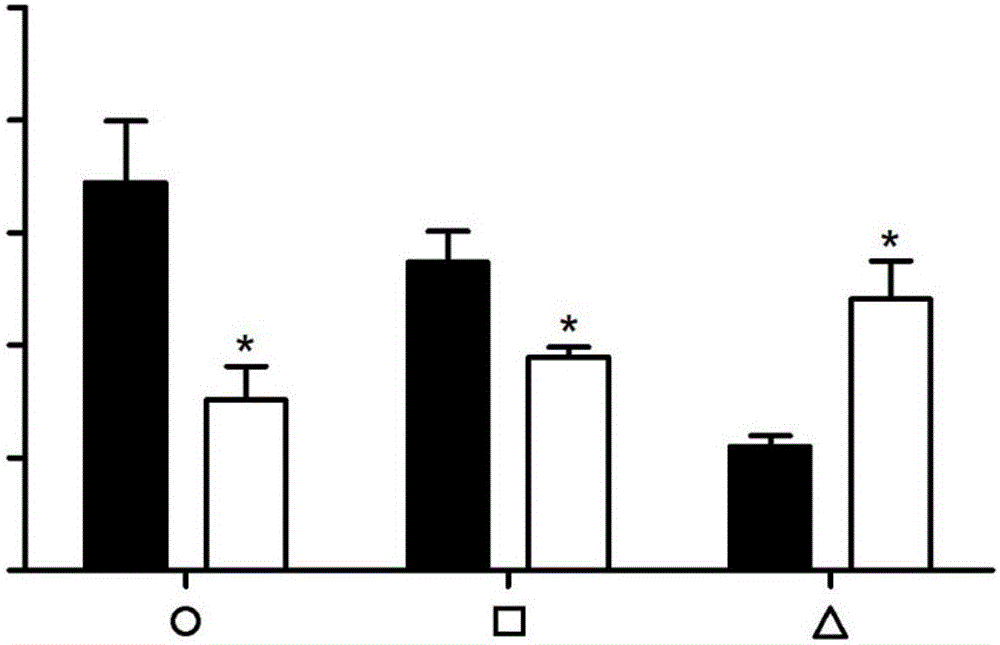Applications of nitidine chloride in preparing medicines for preventing/treating sepsis
A technique for chloramphenicol and sepsis, which can be used in drug combinations, antipyretics, non-central analgesics, etc., can solve problems such as unreported effects, and achieve the effect of great application value
- Summary
- Abstract
- Description
- Claims
- Application Information
AI Technical Summary
Problems solved by technology
Method used
Image
Examples
Embodiment 1
[0038] Example 1 Effects of different dosages and different administration times of dianthine chloride on the survival rate of LPS-induced sepsis mice.
[0039] 1.1 Experimental materials
[0040] Chlorinated acetine (commercially available, Shanghai Ronghe Company);
[0041] LPS (American Sigma Company, derived from Escherichia coli 055: B5);
[0042] 0.9% normal saline (made by the laboratory);
[0043] 1.2 Experimental animals
[0044] BALB / c mice, male, 6-8 weeks old, 20-22g, provided by Shanghai Slack Experimental Animal Co., Ltd., were bred in the clean animal room of the College of Pharmacy, Second Military Medical University. The temperature in the animal room was kept at 21±2°C, with a 12-hour day and night cycle, and the mice had free access to food and water. Mice were reared for 7 days to acclimate to the environment before the experiment.
[0045] 1.3 Experimental method
[0046] 1.3.1 Preparation of chlorinated acanthine samples
[0047] Weigh 10 mg, 3 mg,...
Embodiment 2
[0060] Example 2 Research experiment on the prevention and treatment of LPS-induced sepsis
[0061] 2.1 Experimental materials
[0062] 2.1.1 Drugs and reagents
[0063] Acetine Chloride (Shanghai Ronghe Company);
[0064] LPS (American Sigma Company, derived from Escherichia coli 055: B5);
[0065] 0.9% normal saline (made by the laboratory);
[0066] The ELISA kit of IL-10, TNF-α, IL-6 (U.S. eBioscience company);
[0067] Paraformaldehyde (Shanghai Boguang Company)
[0068] 2.1.2 Instruments and equipment
[0069] Horizontal centrifuge Allegra X-30R Centrifuge (Beckman coulter, USA);
[0070] -80°C ultra-low temperature refrigerator (Thermo Fisher Scientific, USA);
[0071] Constant temperature mixer (Eppendorf Thermomixer comfort, the United States);
[0072]Microplate reader microplate reader Elx800 (BioTek Instruments, USA);
[0073] 2.2 Experimental animals
[0074] BALB / c mice, male, 6-8 weeks old, 20-22g, provided by Shanghai Slack Experimental Animal Co., Lt...
Embodiment 3
[0093] Example 3 Effect of limpetine chloride on the polarization of bone marrow-derived macrophages
[0094] Under the stimulation of LPS, macrophages polarize to M1 macrophages, releasing a large amount of pro-inflammatory mediators and a small amount of anti-inflammatory mediators, but under the influence of certain factors, macrophages may transform from M1 type to RM, releasing Lower levels of pro-inflammatory mediators and higher levels of anti-inflammatory mediators. In this experiment, mouse bone marrow-derived macrophages were isolated and cultured. Firstly, the safe dose of chlorinated chlorinated on the bone marrow-derived macrophages was investigated, and then the markers of chlorinated chlorinated on M1 and RM were detected respectively. The effects of secretion and expression were used to further confirm whether acanthine chloride promotes the conversion of M1 to RM.
[0095] 2.1 Experimental materials
[0096] 2.1.1 Primary cells
[0097] Primary bone marrow-...
PUM
 Login to View More
Login to View More Abstract
Description
Claims
Application Information
 Login to View More
Login to View More - R&D
- Intellectual Property
- Life Sciences
- Materials
- Tech Scout
- Unparalleled Data Quality
- Higher Quality Content
- 60% Fewer Hallucinations
Browse by: Latest US Patents, China's latest patents, Technical Efficacy Thesaurus, Application Domain, Technology Topic, Popular Technical Reports.
© 2025 PatSnap. All rights reserved.Legal|Privacy policy|Modern Slavery Act Transparency Statement|Sitemap|About US| Contact US: help@patsnap.com



